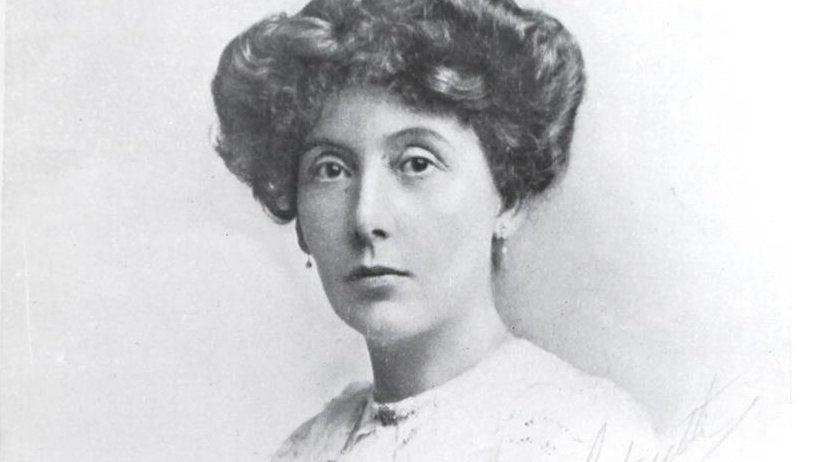Chasing the Sun: The woman forgotten by science
- Published
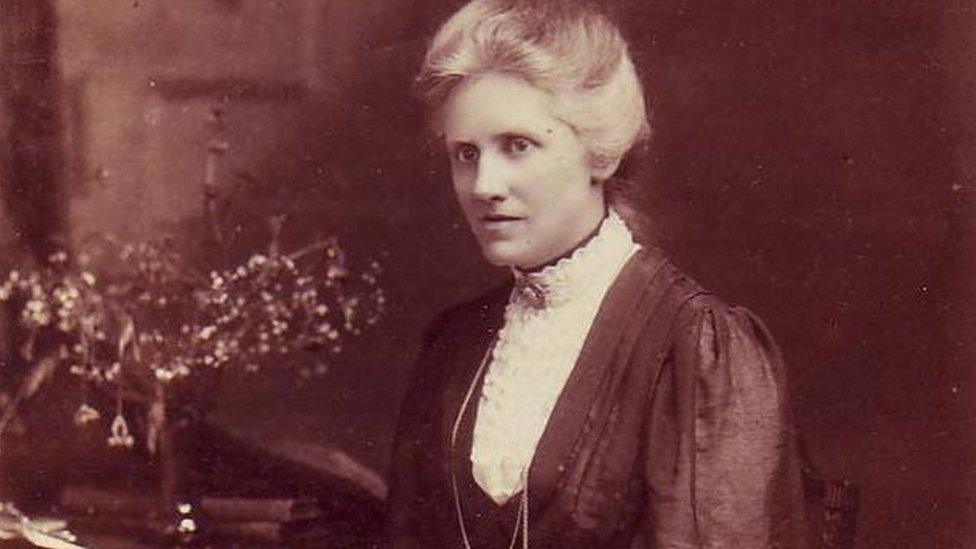
Annie Maunder: A pioneer of solar astronomy
On the far side of the Moon lies the Maunder crater, named after two British astronomers - Annie and Walter Maunder.
Annie worked alongside her husband at the end of the 19th Century, recording the dark spots that pepper the Sun.
The name Maunder is still known in scientific circles, yet Annie has somehow slipped from history.
"I think the name Maunder is there and we have all rather forgotten that that's two people," says Dr Sue Bowler, editor of the Royal Astronomical Society magazine, Astronomy and Geophysics.
"She was acknowledged on papers, she published in her own name as well as with her husband, she wrote books, she was clearly doing a lot of work but she also clearly kept to the conventions of the day, I think."
The 'lady computers'
Annie Scott Dill Russell was born in 1868 in Strabane, the daughter of a Reverend.
Clearly of fierce intelligence, she won a scholarship to Girton College, Cambridge, and became one of the first female scientists to work at the Royal Observatory, Greenwich.
In the courtyard of the observatory, looking over the park, curator Dr Louise Devoy, tells me what little they know about her work.
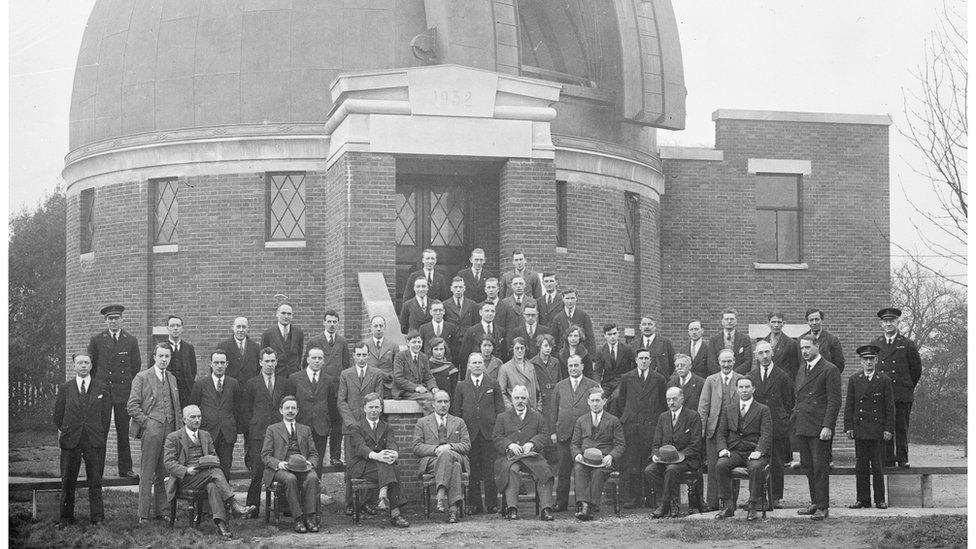
The Royal Observatory, Greenwich, in 1933
"She was one of what we now call the 'lady computers' employed in the early 1890s by the then Astronomer Royal, William Christie," she explains.
"I believe she came from Northern Ireland and she worked here for several years on very low pay just like many of the computers here, both male and female.
"In terms of what she actually did here, we have very little concrete record or photographs.'"
'Grit and devotion'
Female scientists were hindered because of their gender until the 1920s and 30s, despite superb skills and experience, says Dr Devoy.
At Greenwich, employing women with a university education in mathematics was an audacious experiment.
Women were only considered because the Astronomer Royal needed skilled assistants but could afford only lowly computers - historically, schoolboys on a wage of £4 per month.
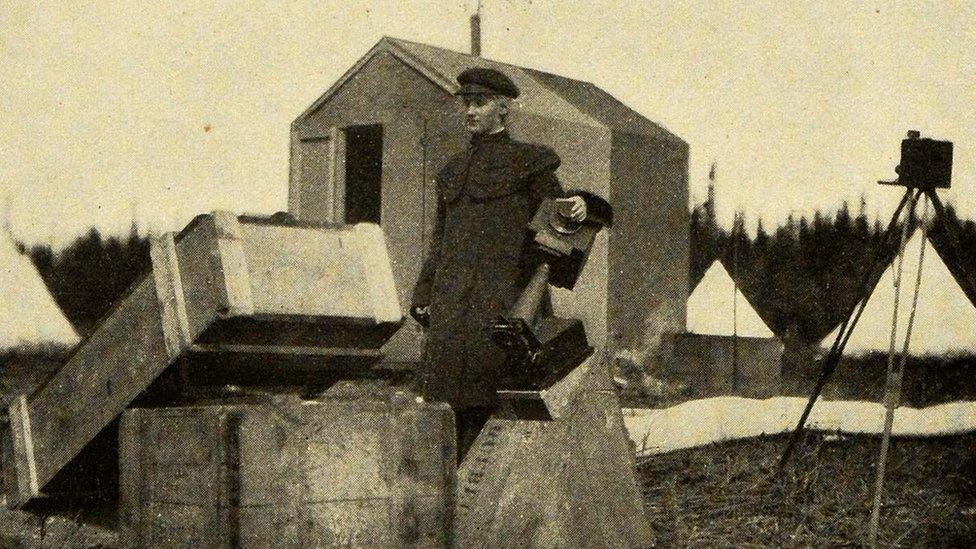
Annie Maunder on an eclipse expedition in Labrador, Newfoundland
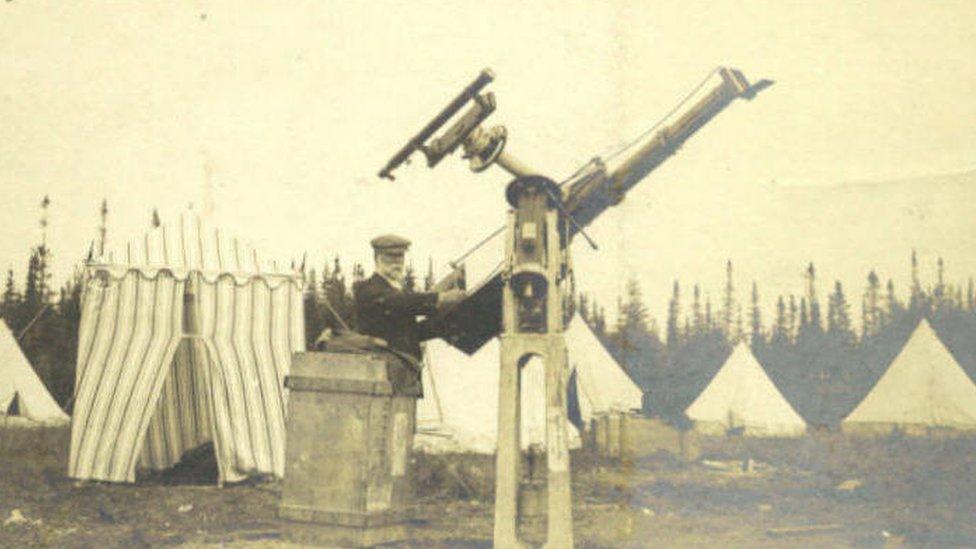
Walter Maunder met Annie after the death of his first wife and collaborated with her until his death
Maunder was offered a post as a lady computer, which meant a huge drop in pay for someone who had been working, briefly, as a school teacher.
Letters show that she appealed for more money but was turned down.
The lady computers would carry out routine calculations to turn raw observations into usable data. They were also trained to use telescopes.
At times, this meant walking through Greenwich Park at night without a chaperone, an activity that was frowned on at the time.
"In an age when many middle-class women were still chaperoned, the grit and devotion of these young women astronomers, clad in their clumsy long gowns as they worked at their telescopes or in the laboratories, were surely remarkable," wrote the science historian and astronomer Mary T Brück.
More on Annie Maunder and other female pioneers of science:
Listen to a radio documentary from BBC Radio Ulster on Annie Maunder - The Lady Computer of Strabane
In 1892, the names of Annie Russell and fellow Greenwich astronomer Alice Everett were put forward to become fellows of the Royal Astronomical Society.
However, they failed to gain enough of the popular vote in a secret ballot and were rejected.
The RAS had long argued that since the pronoun "he" was used in the charter, women could not be admitted alongside men.
Instead, Annie Russell and Alice Everett, who had studied together at Cambridge, joined the amateur British Astronomical Association (BAA).
Alice Everett grew tired of the low pay and left Greenwich, eventually developing an interest in the new field of television. Annie Russell stayed on.
"She was clearly very tough and wanted to follow her science," says Dr Bowler.
"She sat the [difficult] mathematical Tripos at a time when women couldn't actually be awarded a degree and there were even protests at Cambridge against the whole idea of giving women degrees.
"So she was clearly tough enough to do that and to do it well and to succeed then in getting employment as a scientist, which was fairly rare anyway - astronomy was still very much a gentleman's pursuit."
Studying the Sun
Annie Russell married her colleague Edward Walter Maunder in 1895.
Under civil service rules, as a married woman, she was forced to give up her paid position, bringing the age of lady computers to an end.
"She did come back as a volunteer during the First World War and then she was taken on as a paid employee later in the 1920s,'' says Dr Devoy.
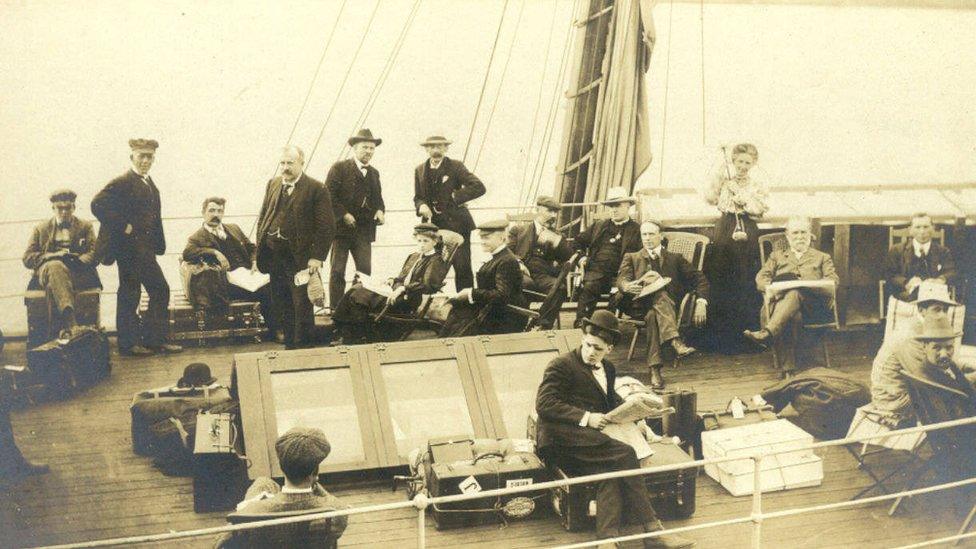
On board ship: Annie and Walter Maunder can be seen sitting together
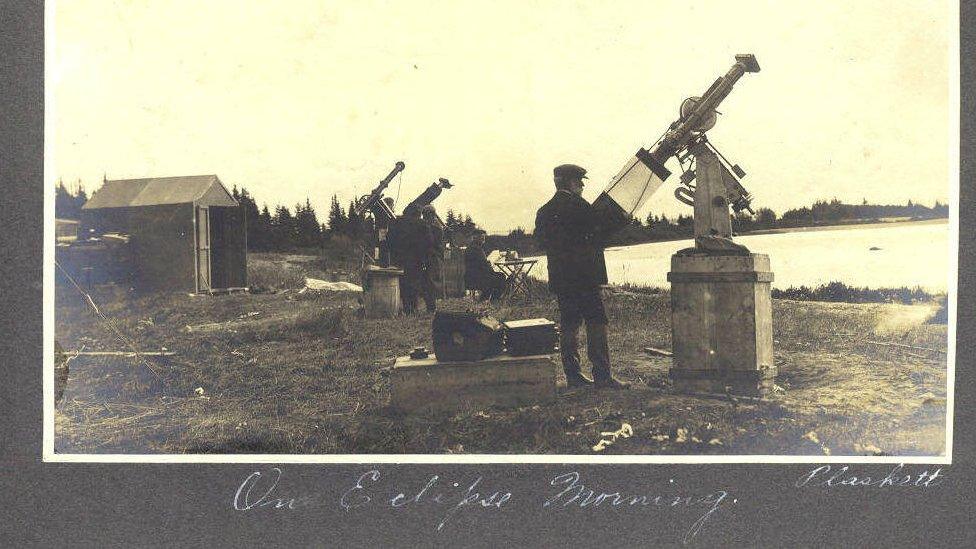
Family photos show preparations for observing an eclipse
Annie worked alongside Walter taking photographs of the Sun, laying the groundwork for a modern understanding of solar activity.
"They would take photographs of the Sun every clear day just to note where the sunspots were and to sketch where they were," says Dr Bowler. "But she also, as a trained mathematician, put quite a bit of effort into analysis. She wasn't just writing things down; she wasn't just Walter's assistant."
Annie Maunder went on many scientific expeditions to observe eclipses around the turn of the century, often as the only woman. She travelled to Lapland, India, Algiers, Mauritius and Labrador.
She even designed her own camera to take spectacular pictures of the Sun, including the first photograph ever of streamers from the Sun's outer layer, or corona.
"She particularly caught an extremely long ray - a streak of the corona - coming out from the Sun, while it was eclipsed, that nobody had ever seen before - a feature of the corona that people just didn't know about," says Dr Bowler.
"I've seen photos of her adjusting the instruments. She's taking her photographs. She's not at all a passenger.
"It may have been only socially acceptable for her to go because she's travelling with her husband but she was on official scientific expeditions and her photographs were acknowledged as among the best."
The Heavens and Their Story
The conventions of the time meant that Annie's photographs were published under her husband's name and she could not speak at scientific meetings.
However, she was eventually made a fellow of the Royal Society in 1916, 24 years after first being proposed.
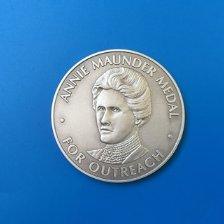
The RAS has set up the Annie Maunder medal
She was involved with promoting astronomy to a general audience as vice president of the BAA and edited the in-house journal.
In 1908, the Maunders published the book, The Heavens and Their Story, which was aimed at popular science.
The book was released under both their names, but her husband acknowledged in the preface that it was almost all her work.
The Maunders are also well known for the butterfly diagram, which shows how the number of sunspots varies with time, and the Maunder Minimum, a period in the 17th Century when sunspots all but disappeared.
Much of their work still holds true today.
Annie's legacy
This year, Annie's name is being remembered through the inaugural Annie Maunder Medal, to recognise public engagement in science.
"She is an ideal person for that medal to be named after," says Dr Bowler. "That's largely what she was doing, certainly later in her career."
Annie Maunder died in 1947, long after her husband.
On a leafy street near Clapham Common I find the Victorian terraced house where she spent her final years.
From the outside there is nothing to speak of the pioneering scientist.
Yet, despite perhaps not getting the recognition she deserved in her lifetime, she clearly left her mark on science.
"From her letters which are in the Royal Astronomical Society archives she was a very strong-minded, very decided personality," says Sue Bowler.
"She didn't mince her words. She's really quite amusingly rude in some of her letters and very precise.
"I really admire her - she's one of the people I would definitely have at my dream dinner party - I think she would be extraordinarily interesting.
"And her thoughts, her opinions about the paper based on her observations are very modern and form the basis for solar physics through a lot of the years following."
Follow Helen on Twitter @hbriggs., external
- Published15 February 2016
